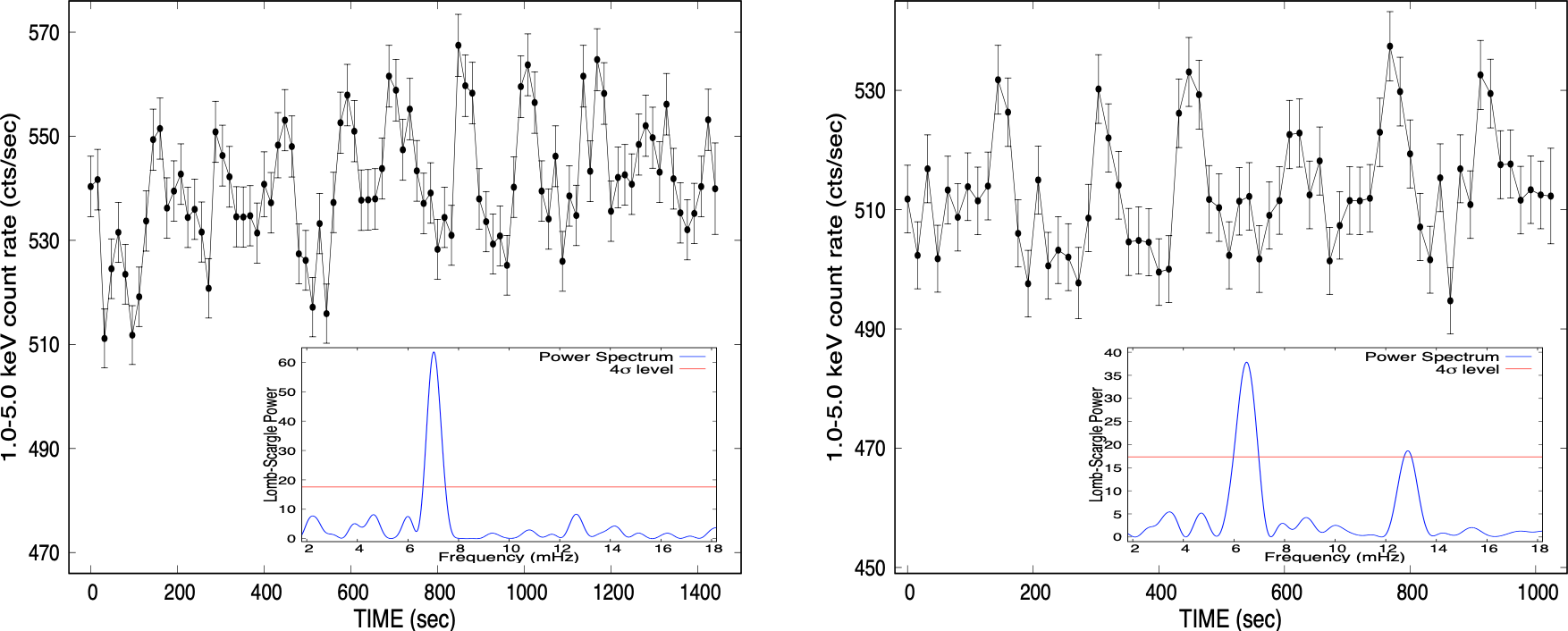NICER / ISS Science Nugget
for May 4, 2023
May the Nuclear Force be with 4U 1730-22
Beginning in late 2021 and through August 2022, NICER observed two outbursts from the accreting neutron star binary system 4U 1730-22, which had been quiescent for some 50 years. These observations have yielded a number of interesting findings, among which is the discovery of so-called millihertz quasi-periodic oscillations (mHz QPOs), recently published by G. Mancuso (Argentine Institute for Radioastronomy) and collaborators in the peer-reviewed U.K. journal Monthly Notices of the Royal Astronomical Society.
The surface of a neutron star offers an exotic stage on which we are able to watch physics play out, providing insights into the conditions in these unique environments. When a neutron star draws matter from a low-mass companion star, the accumulated matter is compressed to exceptional densities at high temperatures, and undergoes nuclear fusion reactions as a result. Thermonuclear burning of hydrogen and helium on the surface is thought to be continuous at high rates of mass accretion, cataclysmic (manifesting as "Type I burst" explosions) at lower rates, and "marginally stable" in a narrow band between the two. The ignition - primarily of helium - and quenching of the marginally stable process manifests as bouts of contrasting higher- and lower-temperature thermal emission that typically lasts about 100 seconds. Such millihertz QPOs are seen to disappear immediately after a Type I burst, suggesting depletion of the thermonuclear fuel in these explosive events (of which NICER detected 17 from 4U 1730 during its 2021-2022 outbursts).
NICER detected mHz QPOs in 35 individual observations of 4U 1730, with frequencies ranging from 4.5 to 8.1 millihertz; on average, only 2% of the observed emission participated in this oscillatory behavior. The fluctuations occur only in a narrow band of the system's luminosity, which tracks the rate of mass accretion from the companion star. This behavior provides evidence for a degree of confinement of the nuclear flame on the neutron star surface that remains difficult to explain in detail, although a leading hypothesis is that the star's rapid rotation may set up turbulent mixing of the accreted material and preferentially cause ignition to occur primarily near the equator. Only a handful of examples of mHz QPO behavior exist to date, so 4U 1730 adds to a small but valuable dataset that enables exploration of the extreme conditions on neutron star surfaces.

Figure:
Two examples of marginally stable nuclear burning on the surface of the neutron star in the low-mass X-ray binary 4U 1730-22, observed with NICER in May (left) and February (right) 2022. The rate of photon detections in the energy range 1 to 5 keV fluctuates approximately every 143 seconds (left) and 156 seconds (right); these quasi-periodic signals are also evident in the "periodograms" (inset plots) as peaks at 7 and 6.4 mHz, respectively. (Figure credit: Mancuso et al. 2023)
<< Previous
Main Index